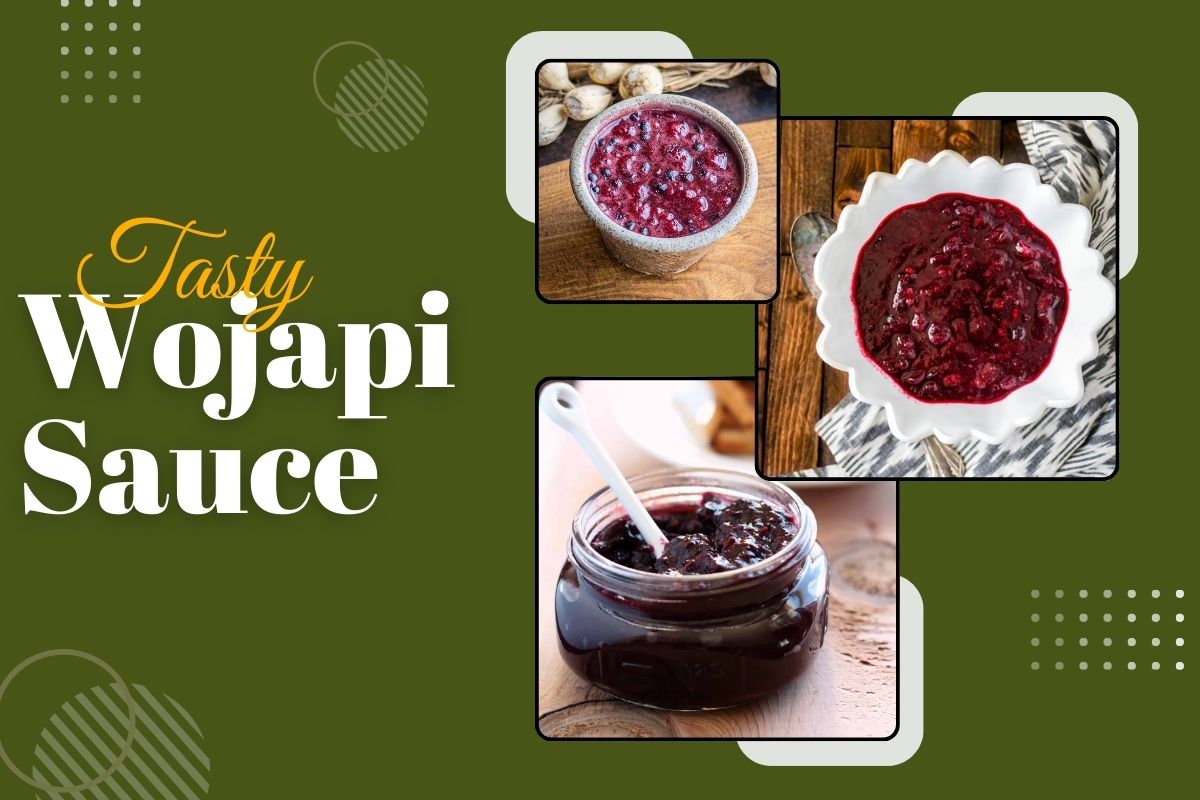Wojapi Sauce, or Wojapi as the Natives call it, is a blend of culture, food, and years of history. It’s a sauce loaded onto pancakes for breakfast or served at the centre of the dinner table. The core ingredient is berries, which are hyper-communal for Native Americans. Wojapi contains a base ingredient of berries which are sweet, tangy, and thick while being broad enough to start at a yummy breakfast or even dessert.
The sauce was adored by the Lakota, Dakota, and Nakota tribes, using it as a staple during family meals or even feast. However, now it has entered the realm of gourmet kitchens and food festivals. Let’s take a journey into the wonders of this vibrant sauce in this article.
A Taste of Heritage
The origins of Wojapi can be traced back to the West Plains tribes (the Lakota and Dakota), and it goes back centuries before dastardly preservatives and processed sugars made their way into pantries. Back in the day, people used to use all sorts of seasonal berries for their Wojapi: chokecherries, serviceberries, wild plums, juneberries, you name it!
Before colonisation, Native peoples prepared wojapi by boiling these fruits into a thick blend that has the consistent spoonability of jam.
The result was a sauce that was deliciously sweet, tangy, and deep purple or red, which emulated the essence of harvests during summer.
Wojapi was more than a dip or a topping; it had great significance. It was served during powwows, family get-togethers and sacred ceremonies.
Those preparing wojapi often did it in a group setting to commemorate and strengthen their bonds through shared celebrations while honoring the Earth. Eating wojapi was not only about savoring flavors but also about respect and community.
Wojapi Ingredients: Simplicity Speaks Volumes
At its core, Wojapi has very few ingredients, and that’s part of its power. A traditional recipe might include:
- Fresh or frozen berries (blueberries, blackberries, chokecherries, or strawberries)
- Water
- A natural thickener (ground wild rice flour, cornstarch, or even mashed berries)
- Honey or maple syrup (optional for sweetness)
Some modern recipes add lemon juice, cinnamon, or vanilla, but the soul of Wojapi lies in letting the berries shine. The goal isn’t to mask the natural tartness or richness but to elevate it.
How to Make Wojapi Sauce (Traditional & Modern)
Traditional Style Wojapi:
- Start with berries. Use wild-picked if possible. Chokecherries are the most traditional, but you can use a mix.
- Simmer. Add the berries to a pot with a little water. Heat gently until the berries burst and break down.
- Thicken. Some traditional cooks use nothing at all to thicken; they simply let the sauce reduce. Others use ground corn or wild rice flour.
- Sweeten slightly. If needed, a bit of maple syrup or honey brings it together.
- Cool and enjoy. Wojapi thickens as it cools, turning into a vibrant, spoonable treat.
Modern Adaptation:
- In a saucepan, combine 2 cups of fresh or frozen mixed berries with ½ cup water.
- Bring to a simmer, stirring occasionally.
- In a separate bowl, mix 1 tablespoon cornstarch with 1 tablespoon cold water.
- Add the cornstarch slurry to the simmering berries.
- Stir until thickened (around 5–8 minutes).
- Add a teaspoon of honey, if desired, and remove from heat.
Wojapi is one of those sauces that can be rustic or elegant. It can be homemade in 20 minutes or cooked all afternoon in a slow, ceremonial rhythm.
Ways to Enjoy Wojapi
While Wojapi was traditionally eaten with fry bread — another Native American culinary staple — it’s incredibly flexible. In modern kitchens, chefs and home cooks alike are exploring new pairings. Here are some delicious ways to use Wojapi Sauce:
- With Fry Bread: The classic combo — crispy, warm, golden fry bread slathered in berry-rich Wojapi is pure comfort.
- As a Pancake or Waffle Topping: Move over, maple syrup! Wojapi adds tart richness to your breakfast stack.
- Over Ice Cream: Cold vanilla meets warm berry sauce — a dreamy contrast.
- On Cheesecake: The perfect tangy topping to balance rich, creamy desserts.
- With Roasted Meats: Yes, really. Wojapi’s acidity can balance rich meats like duck or venison.
- In Yogurt or Smoothie Bowls: Add a spoonful for a pop of flavor and a nutrient boost.
Why It’s More Than Just a Sauce
The origins of Wojapi can be traced back to the West Plains tribes (the Lakota and Dakota), and it goes back centuries before dastardly preservatives and processed sugars made their way into pantries.
Back in the day, people used to use all sorts of seasonal berries for their Wojapi: chokecherries, serviceberries, wild plums, juneberries, you name it!
Before colonization, Native peoples prepared wojapi by boiling these fruits into a thick blend that has the consistency spoonability of jam. The result was a sauce that was deliciously sweet, tangy, and deep purple or red, which emulated the essence of harvests during summer.
Wojapi was more than a dip or a topping; it had great significance. It was served during powwows, family get-togethers and sacred ceremonies.
Those preparing wojapi often did it in a group setting to commemorate and strengthen their bonds through shared celebrations while honoring the Earth. Eating wojapi was not only about savoring flavors but also about respect and community.
A Sauce That Teaches
Wojapi isn’t just a dish—it’s a teacher. It reminds us:
- To use what we have: It adapts to what’s in season or in your fridge.
- To slow down: Wojapi rewards patience, simmering into something richer with time.
- To honor our ancestors: It’s made the same way today as it was centuries ago.
- To connect: Whether you’re making it alone or with loved ones, there’s a sense of tradition woven in.
Conclusion
If you wonder about trying it out, don’t wait for a Wojapi offering from a restaurant; go ahead and make it yourself. It has a lower margin for error, is inexpensive, and is effortless to prepare. Most importantly, it preserves and pays homage to the cultures that nurtured and safeguarded the dish through generations.
When you ladle warm Wojapi Sauce over your morning pancakes or drizzle it onto cheesecake for friends, you’re not just serving a sauce. You serve a story. One that deserves to be told with each bite.
Tags: Wojapi Sauce

